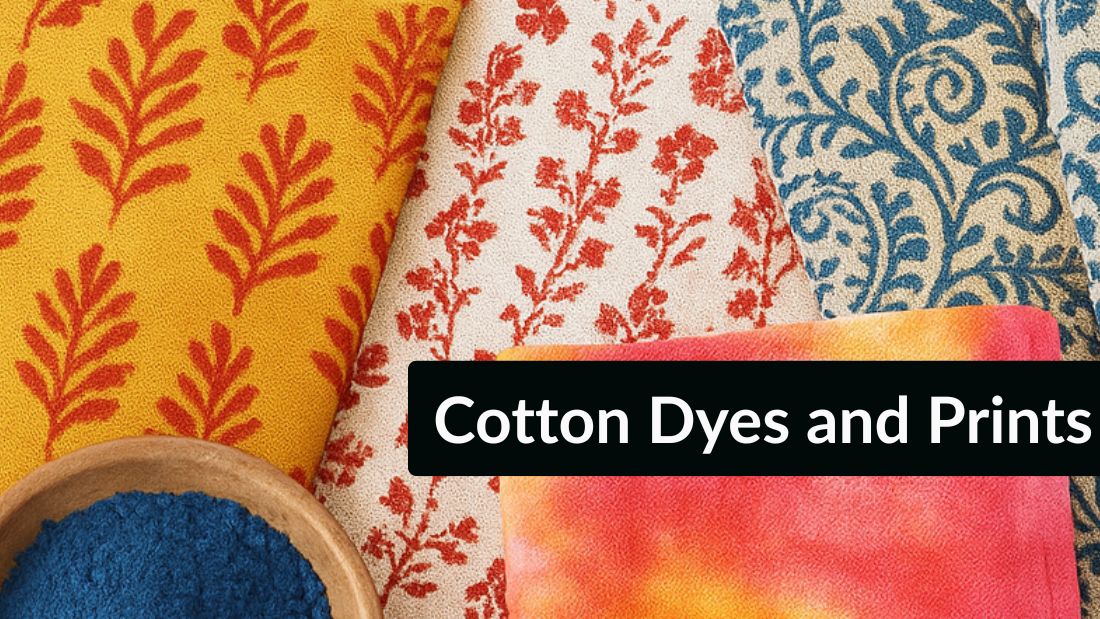
Cotton Dyes and Prints: A Guide to Patterns and Pigments
Share
When it comes to clothing that blends comfort, beauty, and durability, pure cotton always stands out. Beyond its breathable texture and soft feel, cotton also acts as the perfect canvas for vibrant dyes and artistic prints. From timeless block prints to modern digital patterns, cotton’s natural fibers absorb color beautifully—making it the most loved fabric for fashion designers and everyday wearers alike.
Why Cotton Takes Dye So Well
Cotton is a plant-based fiber, meaning it’s made primarily of cellulose. This structure allows dyes to bond deeply with the fibers, creating long-lasting colors that stay bright even after multiple washes. Unlike synthetic fabrics, pure cotton absorbs pigments naturally, without needing heavy chemicals—making it both eco-friendly and skin-friendly.
Popular Types of Cotton Dyes
-
Reactive Dyes
These are among the most common and sustainable dyes for cotton. They chemically bond with the fibers, producing rich, fade-resistant colors that remain vibrant for years.
-
Vat Dyes
Known for their excellent colorfastness, vat dyes are used for denim, canvas, and other strong cotton materials. Indigo—the dye behind blue jeans—is a classic example.
-
Natural Dyes
Derived from plants, roots, and minerals, natural dyes like indigo, turmeric, and madder root give cotton a timeless, earthy appeal. These dyes are gentle on the skin and environment, perfect for those who prefer sustainable fashion.
-
Pigment Dyes
Unlike traditional dyes that soak into fibers, pigments sit on the fabric’s surface, giving cotton garments a washed or vintage look. Pigment-dyed cotton often appears soft and slightly faded, adding a casual charm.
Exploring Cotton Print Techniques
Once the cotton is dyed, the real artistry begins. Printing brings designs to life through a variety of techniques, both traditional and modern.
-
Block Printing
A centuries-old method, block printing uses hand-carved wooden blocks dipped in dye to stamp patterns on cotton fabric. Each piece is unique, reflecting skilled craftsmanship and cultural heritage.
-
Screen Printing
Ideal for bold and graphic designs, screen printing involves pressing color through a fine mesh onto the cotton surface. It’s widely used in t-shirts, dresses, and home textiles.
-
Digital Printing
A modern marvel, digital printing allows for intricate, multicolored designs to be printed directly on cotton fabric with precision and minimal waste.
-
Tie-Dye and Batik
Both techniques play with resist-dyeing methods—where parts of the cotton are tied, waxed, or folded to prevent dye from reaching them. The result? Beautifully irregular patterns that celebrate creativity and spontaneity.
Patterns That Never Go Out of Style
-
Floral Prints: A favorite for summer attire, floral designs on cotton dresses bring freshness and femininity.
-
Stripes and Checks: Perfect for daily wear, these classics never fade from fashion.
-
Ethnic Motifs: Inspired by nature and tradition, these prints give cotton dresses an artisanal touch.
-
Abstract and Geometric: For those who love modern minimalism, clean lines and bold shapes on pure cotton make a strong statement.
Why Choose Pure Cotton for Prints and Dyes
When you choose pure cotton, you’re choosing more than comfort—you’re supporting sustainable craftsmanship. Cotton’s natural ability to hold dyes and prints without heavy chemicals makes it the ideal choice for people who value both style and skin-friendly fashion. Plus, the fabric’s breathability ensures that your outfits stay cool, colorful, and comfortable all year round.
Final Thoughts
From age-old indigo vats to advanced digital printers, cotton continues to evolve as the ultimate medium for creativity. Whether you love bold hues, subtle tones, or traditional artistry, pure cotton celebrates every color and every pattern—naturally.




